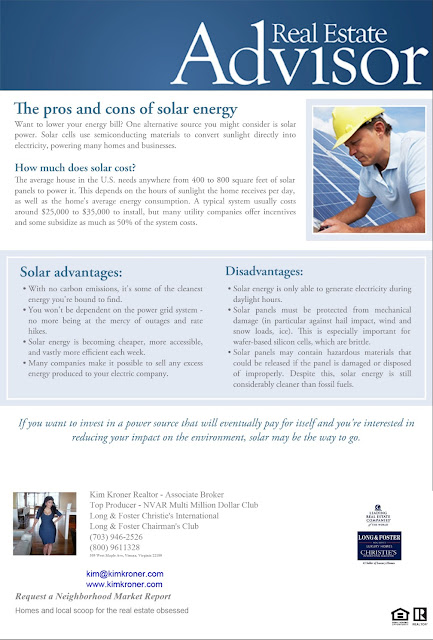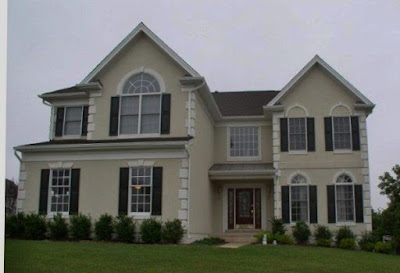The pros and cons of solar energy
The pros and cons of solar energy
Want to lower your energy bill? One alternative source you might consider is solar power. Solar cells use semiconducting materials to convert sunlight directly into electricity, powering many homes and businesses.How much does solar cost?
The
average house in the U.S. needs anywhere from 400 to 800 square feet of
solar panels to power it. This depends on the hours of sunlight the
home receives per day, as well as the home's average energy consumption.
A typical system usually costs around $25,000 to $35,000 to install,
but many utility companies offer incentives and some subsidize as much
as 50% of the system costs.
Solar advantages: |
Disadvantages: |
|
|
If
you want to invest in a power source that will eventually pay for
itself and you're interested in reducing your impact on the environment,
solar may be the way to go.
For More Information:
Kim Kroner Realtor - Associate Broker
Top Producer - NVAR Multi Million Dollar Sales Club
Member - Long & Foster Chairman's Club
Long & Foster Christie's International
kim@kimkroner.com
(703) 946-2526
(800) 961-1328
www.kimkroner.com
309 Maple Ave W. Vienna, VA 22180




Comments
Post a Comment